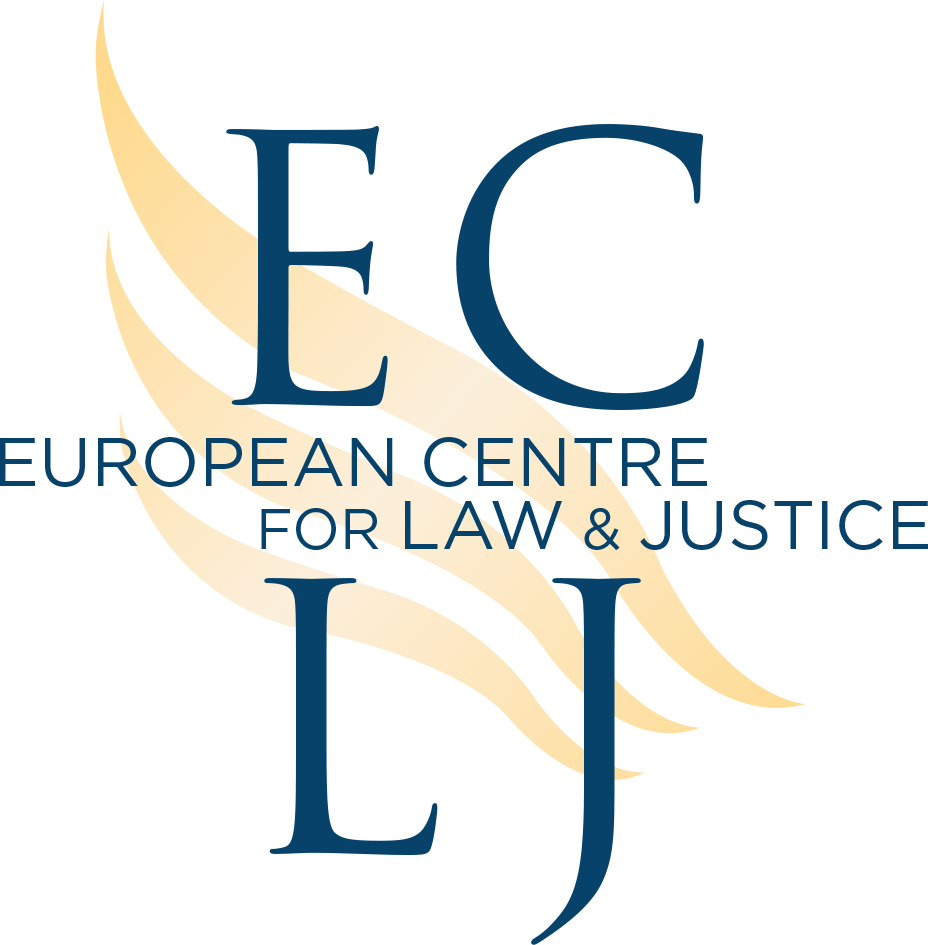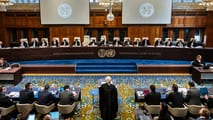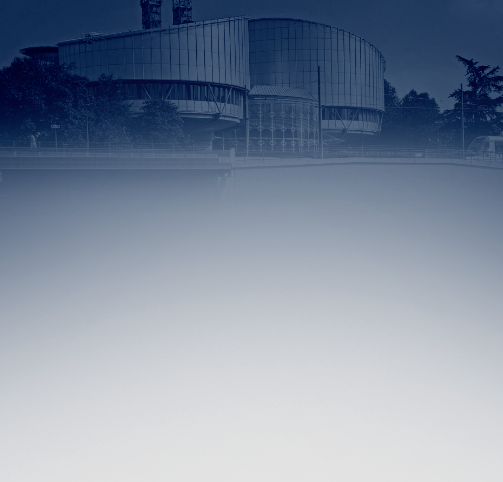

End of life: what's the difference between "making someone die" and "letting someone die"?
"Making die" or "letting die"?
The ECLJ intervened as a third party in a case pending before the European Court of Human Rights (ECHR), Medmoune v. France (No.55026/22). This case concerns the medical decision to stop the treatment of Mr. Medmoune, victim of a serious accident and now deceased. The family invokes Mr Medmoune’s right to life.
In its written observations, the ECLJ explains that any decision to stop medical treatment does not violate the patient’s right to life. On the contrary, disproportionate treatment must be stopped, in order to respect the patient’s rights. Respect for a patient’s life does not mean maintaining his or her life artificially at all costs. It is not to promote euthanasia to point out this truth.
Mr Medmoune’s state of health
Abdelhadi Medmoune was born in 1978 and had four children. On May 18, 2022, he was crushed by a utility vehicle he was repairing. The accident resulted in severe polytrauma, complicated by cardiorespiratory arrest, which left the brain without oxygen for seven minutes. Mr. Medmoune was treated in a hospital intensive care unit.
Six months after the accident, the medical team noted an “abolition of consciousness resulting from the anoxic lesions caused by his accident, with no reaction either spontaneous or on demand, and no possibility of contact with the outside world,”[1] as well as the total absence of “brain stem reflexes, with the exception of the oculo-cardiac reflex, and no possibility of breathing without mechanical ventilation, spontaneous breathing being ineffective.” Mr. Medmoune’s condition was not improving, and no prospect of improvement could be anticipated. Worse still, his condition was deteriorating, "the already existing bedsore was aggravated by an occipital and scapula bedsore, with major muscle loss and the disappearance of all blinking reflexes requiring continuous mechanical occlusion of the eyelids".
A decision to stop treatment
The medical team had already considered for several months that, given his state of health, continued treatment would have constituted unreasonable obstinacy. According to the doctors, such continuation would have amounted to “mistreatment” of a patient at the end of his life. The medical team therefore decided to stop the treatment.
Mr. Medmoune’s wife and two sisters objected to the decision, and appealed against it. For them, stopping treatment would constitute euthanasia. They also invoked the content of Mr. Medmoune’s “directives anticipées,”[2] drawn up during his lifetime. In the event of an accident, and regardless of his state of health, these asked that he be kept alive at all costs.
The French courts upheld the legality of the decision to stop treatment. Mr. Medmoune’s wife and two sisters lodged an application with the ECHR, invoking the right to life (article 2). The French government informed the Court that Mr. Medmoune finally died on December 26, 2022, following the cessation of treatment.
According to Article 2 of the European Convention on Human Rights (right to life), "no one shall be deprived of his life intentionally", which explicitly excludes euthanasia. However, not every cessation of treatment constitutes euthanasia. The legal question raised by this case is therefore: does the decision to stop Mr. Medmoune’s treatment amount to euthanasia, violating his right to life?
Some useful definitions
ECLJ intervened in the Medmoune v. France case (No. 55026/22) at the ECHR, as a third party. In our written observations, we review a number of concepts that are essential to a proper legal analysis of this case.
- Euthanasia
Euthanasia is an act resulting from a deliberate intention to kill the patient. This act may be negative (an omission).
- Proportionate or disproportionate means
Over the centuries, philosophers and theologians have developed a distinction between "ordinary" and "extraordinary" means of preserving a person’s life[3] . In the 1950s, the Church’s magisterium took up this distinction, particularly in the context of resuscitation[4] . Recent ethical thinking qualifies means as “proportionate” or “disproportionate,” depending on the therapy envisaged (nature, degree of complexity or risk, cost, possibility of use), the expected result, and the general state and physical and moral resources of the patient[5] .
When death is imminent, it is morally permissible to dispense with means that have become disproportionate because of the insignificance of the therapeutic result or the constraints imposed on the patient. However, it is unethical to interrupt the normal care and treatment due to the patient. For example, attempts at resuscitation, particularly artificial respiration, are often disproportionate and may be interrupted even if the consequence is the cessation of blood circulation and consequent death[6] . Such an act is not euthanasia, as it does not result from a deliberate intention to kill. Death is merely the natural and unintended consequence of the cessation of disproportionate treatment[7] .
Euthanasia must be distinguished from the decision to forego disproportionate treatment. There is a difference in nature between these two acts, even if their consequence is the same (death). Euthanasia corresponds to “making someone die” (killing), whereas discontinuing disproportionate treatment corresponds to “letting someone die” (in accordance with nature)[8] .
- Care and treatment
Elementary care is always considered proportionate. The administration of water and food, even through artificial channels, is elementary care, i.e. it is always proportionate[9] . The same applies to hygiene that meets the patient’s day-to-day needs. Treatment such as artificial respiration, on the other hand, may be proportionate or disproportionate, depending on the specific circumstances.
- Unreasonable obstinacy
Unreasonable obstinacy (obstination déraisonnable) is defined in article L1110-5 of the French Public Health Code, as opposed to useful and proportionate care and treatment with regard to the patient’s state of health:
“Every person has the right, in view of his or her state of health and the urgency of the interventions it requires, to receive the most appropriate care and to benefit from therapies whose efficacy is recognized and which guarantee the best health safety in the light of proven medical knowledge. Preventive, investigative and therapeutic procedures must not, in the light of current medical knowledge, involve risks disproportionate to the anticipated benefits.
These acts must not be pursued with unreasonable obstinacy. When they appear unnecessary, disproportionate or having no effect other than the artificial maintenance of life, they may be suspended or not undertaken.”[10]
Unreasonable obstinacy is synonymous with “therapeutic obstinacy.”
Summary table :
| Maintain / continue | Stop |
Basic care | Medicine | Euthanasia |
Proportionate treatment | Medicine | Euthanasia |
Disproportionate treatment | Unreasonable obstinacy | Medicine |
Government confusion
The ECLJ’s written observations in Medmoune v. France address two errors. The first is that of the French government, in its observations submitted to the ECHR[11] . The government sees all “medical aid in dying” as legitimate, and is using this case to further its plan to legalize euthanasia. Yet this practice is contrary to the right to life, as protected by Article 2 of the European Convention.
These observations strongly advise the ECHR against using the French government’s interpretation of the concept of “medical aid in dying.” The government includes and confuses opposing acts: “making someone die” (killing) and “letting someone die” (accompany, care). This has the effect of trivializing euthanasia and assisted suicide, putting them on the same level as the legitimate and necessary refusal of unreasonable obstinacy.
Contrary to what the government claims, the decision to stop Mr. Medmoune’s treatment was not a “medical aid in dying.” It was merely a refusal of unreasonable obstinacy, as these treatments were disproportionate to his objective medical situation.
The applicants’ error
The second error is that of the applicants, who claim on Mr. Medmoune’s behalf to be receiving disproportionate treatment. The treatments requested would keep Mr. Medmoune artificially alive, offer no hope of improving his state of health and have negative consequences for his health. Patients have no right to receive treatment against their own health or life.
Similarly, there is no right to receive medical treatment that has no therapeutic purpose, even under Article 8 (right to respect for private life). It is for this reason that several acts usually carried out by healthcare professionals are not protected under Article 8: abortion[12] , assisted suicide[13] , euthanasia, sex reassignment[14] and cosmetic surgery.
Mr. Medmoune therefore has no right to receive the treatment his wife and sisters requested for him.
____________________
[1] Quotations from the application file are freely translated from French into English.
[2] “Directives anticipées” are a written statement that a person writes to clarify his or her wishes related to the end of your life.
[3] See Abbé François Knittel, « Se soigner et se faire soigner - Réflexions morales sur les moyens pour l’homme de conserver la vie », Le Sel de la terre, n° 74, pp. 49-57.
[4] Pius XII, « Allocution sur les problèmes de la réanimation », November 24, 1957, in Œuvres complètes de Pie XII, Saint-Maurice, Éditions Saint-Augustin, p. 695.
[5] Sacred Congregation for the Doctrine of the Faith, Jura et Bona declaration on euthanasia, May 5 1980, no. IV. See also: Pontifical Council “Cor Unum”, “Questions of ethics regarding the fatally ill and the dying”, July 27, 1981, nos. 2.4.1 and 2.4.2.
[6] Pius XII, « Allocution sur les problèmes de la réanimation », op. cit.
[7] On the principle of the double effect of an act, see Jocelyne Saint-Arnaud, « Trois discours de Pie XII et le débat sur l’euthanasie », Laval théologique et philosophique, n°50(3), pp. 551-553.
[8] See: John Paul II, encyclical Evangelium vitae, March 25 1995, no. 65, D.C. no. 2114, p. 38.
[9] John Paul II, « Discours aux participants du congrès international « Les traitements de soutien vital et l’état végétatif. Progrès scientifique et dilemme éthique » », March 20, 2004, no. 4, D.C. no. 2313, p. 409.
[10] Unofficial translation.
[11] These are dated April 13, 2023.
[12] ECHR, A, B and C v. Ireland [GC], no. 25579/05, December 16, 2010, § 214; P. and S. v. Poland, no. 57375/08, October 30, 2012, § 96.
[13] ECHR, Lings v. Denmark, no. 15136/20, April 12, 2022, § 52.
[14] ECHR, Y.Y. v. Turkey, no. 14793/08, March 10, 2015, § 65.











